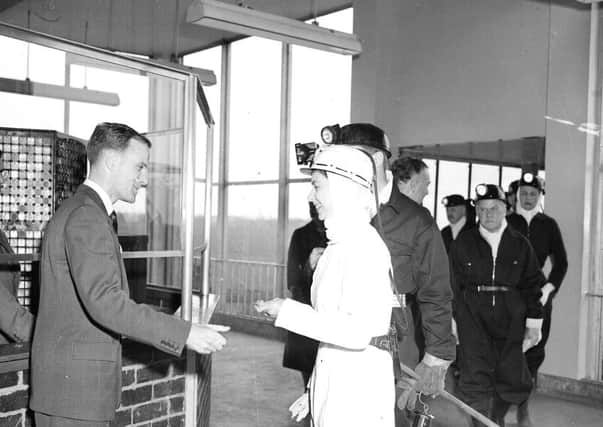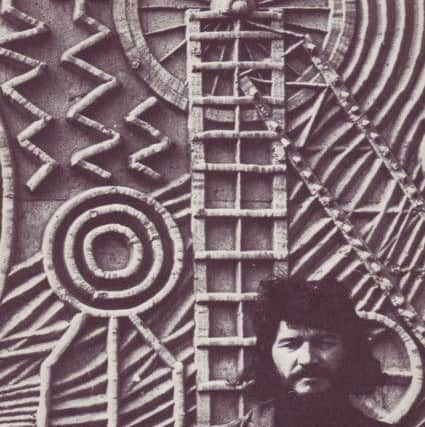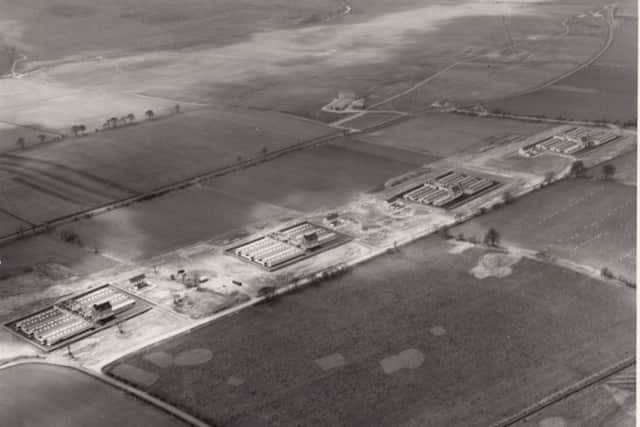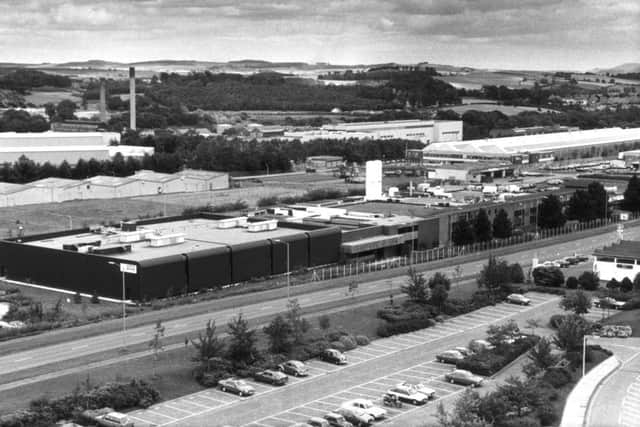Glenrothes at 70 - scandal, art and royalty


As they say, it all happened here!
A town is born
In the beginning the town was nothing more than an idea detailed within a government document.


The end of the Second World War brought the 1946 New Town Act which within two years, and despite a raft of objections from local farmers and the owners of Tullis Russell papermill, saw a pocket of land between the settlements of Leslie and Markinch soon become one of Scotland’s biggest building sites.
Advertisement
Hide AdAdvertisement
Hide AdIn June 30, 1948, the delegation order establishing Glenrothes was signed by the Department of Health’s George Henderson on behalf of the Scottish Secretary...and the rest is history.
The Rothes ‘superpit’
The National Coal Board’s creation of a new ‘superpit’ on the outskirts of the emerging Glenrothes New Town in 1957 was supposed to bring the promise of job security, prosperity and the increased coal production for the next 100 years.


In reality, despite being declared officially open by Queen Elizabeth II on June 30, 1958, the colliery was soon doomed.
Continued flooding of the seam underground forced the closure of the colliery within five years in 1962. It lay abandoned for much of the ensuing years until it was finally demolished in 1993.
Blazing a trail with town art
Advertisement
Hide AdAdvertisement
Hide AdThe town was no stranger to art by the time the Glenrothes Development Corporation took the bold and progressive step of appointing a town artist, specifically to create public art works for its inhabitants. First town artist David Harding’s appointment in 1968 was superseded by a specially commissioned sculpture created for Glenrothes in 1965 by artist in residence to Queen Elizabeth II, Benno Schotz.


The Estonian created the town’s first public artwork – Ex Terra Vis – “From Earth Comes Life” in 1965.
Harding was employed by the GDC three years later in 1968 – the first town in the UK to have such a post. Over the next 10 years, Harding worked as part of the housing department, creating a range of artworks specifically for the people who lived in the vicinity. Among them are celebrated works including The Henge, Heritage and Western Underpass. However, many of the smaller works within the precincts remain the most loved.
Malcolm Robertson followed in 1978 continuing the tradition, creating a diverse and thought provoking range of art throughout the town.
Advertisement
Hide AdAdvertisement
Hide AdHis most memorable include Birds ,situated outside Fife Council’s Kingdom House, Dream, and Giant Irises, which were originally created to promote the town at the Gardening Scotland exhibition in Glasgow in 1983.
The Cadco scandal
The town’s major scandal occurred in the Sixties and it came with Hollywood twist.
In May 1963, Cadco Development Limited announced that it was to bring 2000 jobs to Glenrothes. The company, which boasted film star George Sanders as a director, with Sanders’ wife Benita Hume as a board member, was to build three factories on the Queensway Industrial and planned to open a pig breeding unit at Whitehill and a supermarket in the town centre.
By October 1964 all work had stopped because the Cadco Building Company had not paid its sub-contractors and suppliers.
Advertisement
Hide AdAdvertisement
Hide AdIt turned out that the money the Glenrothes Development Corporation had paid to Cadco for building work had been used instead to help the failing Royal Victoria Sausages Company.
Hopes for jobs soon evaporated.
Original Gazette reporter Alex Shand was the first to break what became a national scandal, with OBEs stripped and questions asked in Parliament.
‘Silicon Glen’
When the Rothes Colliery closed in 1962, further development of Glenrothes almost came to a halt. The town, after all, had been designed to house miners working at the colliery.
But Glenrothes proved, as it has on numerous occasions when facing troubled times, that it can adapt.
Advertisement
Hide AdAdvertisement
Hide AdThe area was granted ‘development district’ status in 1963, and soon the town was growing again – and this time it was attracting more modern businesses to the area.
Beckman Instruments arrived in the town in 1958, followed by Hughes Microelectronics in 1960 and then Hughes Aircraft, better known now as Raytheon.
Soon the town was part of the ‘Silicon Glen’.
In the ‘80s the town hosted electronics companies like Rodime, which produced a range of hard disks, and Apricot computers.
Canon developed its first UK manufacturing plant in Glenrothes in 1992, and ADC Telecommunications established a base in Bankhead in 2000.